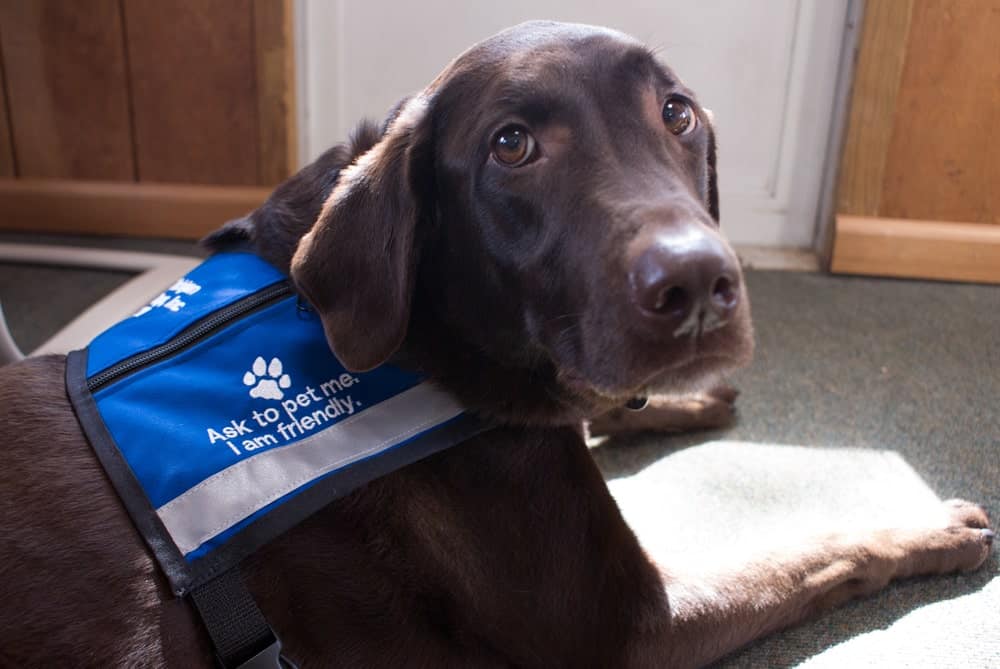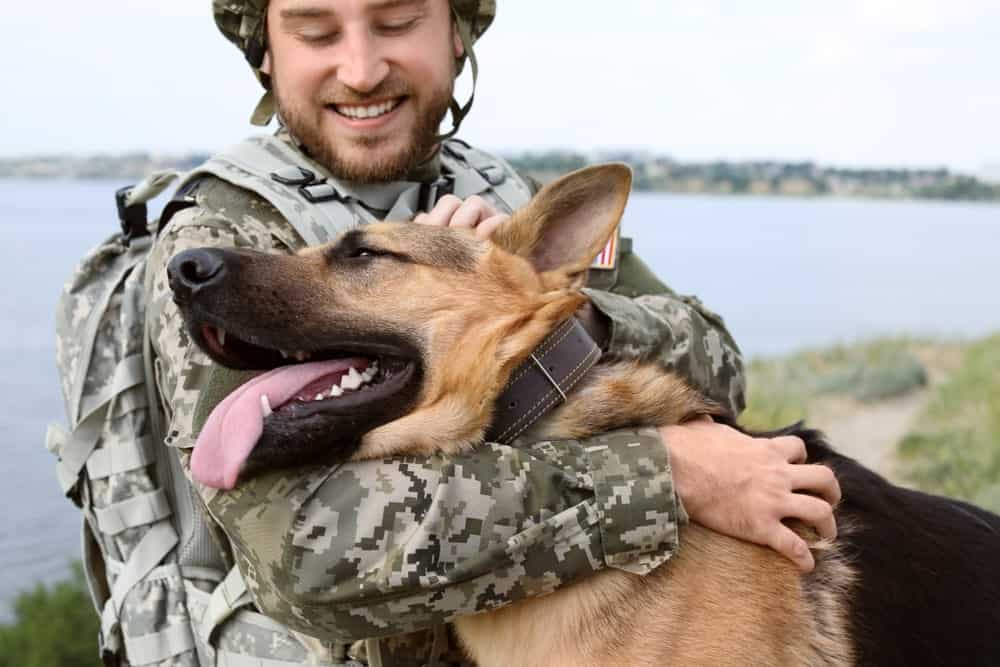“This post contains affiliate links, and I will be compensated if you make a purchase after clicking on my links.”
By Jori Hamilton
Pets enrich our lives in countless ways, but dogs are helpful in a variety of settings that reach far beyond the home. In recent years, we have developed a greater understanding of the benefits of incorporating dogs into healthcare settings, from hospitals to mental health facilities.

But the policies regarding service and therapy dogs in healthcare facilities aren’t always consistent, leading to problematic situations in some cases.
In October 2018, a disabled woman’s service dog was essentially kicked out of New Jersey’s Ocean Medical Center due to lack of concrete policies in place. The woman suffers from seizures as the result of a 2015 car accident, and her service dog, a pit bull named Nala, is trained to detect seizures before they occur. Nala’s removal from the facility led to the woman refusing care so that she could be with her service animal.
While the hospital has since apologized for the incident, it remains a striking example of why overarching rules regarding service and therapy animals should be in place at a national level.
The Many Roles of Dogs as Service Animals
Dogs serve humans in numerous ways. Some, like Nala, are trained to detect particular medical conditions. Others are used in therapy settings, as studies show that pets can help lower blood pressure, increase mental stimulation, and provide overall stress relief. Mental health patients are often able to open up and share more readily once a dog has been integrated into their treatment plan, giving healthcare providers additional tools for diagnosis and care.

Many major children’s hospitals, including the Texas Children’s Hospital in Houston, have therapy animal programs in place in order to improve the quality of patients experiences, helping their young patients feel more comfortable and happy. A number of those programs are facilitated by Therapy Dogs International (TDI), which works closely with hospitals to ensure that the animals visiting patients are healthy, fully vaccinated, and properly groomed.
TDI adheres to the guidelines set by the Society for Healthcare Epidemiology of America (SHEA), which includes having written policies in place regarding animal visits, as well as training programs for both therapy dogs and their handlers. Unfortunately, SHEA’s guidelines are voluntary, and studies show that many healthcare facilities don’t abide by the recommended policies.
In a survey of 45 U.S. hospitals and 45 eldercare facilities, researchers from the Tufts University Cummings School of Veterinary Medicine found that all of the facilities that allowed therapy dogs fell short on at least one of the SHEA guidelines. Further, therapy dog policies varied widely among the facilities surveyed, with two hospitals and 10 eldercare facilities reporting that they had no written policy whatsoever. The study has led to a call for more consistent guidelines across facilities.
Issues Facing Dog-Friendly Facilities
The decision to allow service and therapy dogs into healthcare facilities often falls on the shoulders of the healthcare administrator. The role of a healthcare administrator is multifaceted and involves cutting costs while improving patient care. Great leaders in the realm of healthcare administration are those who can effectively communicate with both patients and hospital staff, and who are willing to adapt to change, including implementing new policies such as therapy dog programs.

A healthcare administrator must weigh the benefits and potential liability risks associated with allowing service and therapy animals into a facility. Liability risks include dog bites and patients with animal allergies affected by the presence of a dog. But, overwhelmingly, the benefits of animal-assisted therapy, from promoting relaxation and reducing patient loneliness to improving cardiovascular health, tend to far outweigh the inherent risks.
Another issue that could come into play for healthcare facilities is the growing number of fake service dogs across the country. It’s important to note that trained therapy dogs are not considered service dogs, as a service dog is defined as one that is trained to meet specific disability-related needs for an individual. The Americans With Disabilities Act protects the rights of individuals with disabilities, such as the blind and veterans with PTSD, by ensuring that service dogs are allowed into public places and private businesses without discrimination.
However, service dogs are not required by law to wear a vest or other identifying gear, and their owner is not required to possess or show a service dog ID card when entering a store, hospital, or other place where dogs typically aren’t allowed. This makes it difficult to determine if a dog is truly a legitimate service animal. And fake ID tags and vests are easy to come by, leading to an influx of pet owners who falsify their dog’s status in order to bring them into stores and other public spaces.
Service Dogs and Veteran Health
Veterans are especially impacted by the recent rise in fake service animals, as many veterans are assisted by service dogs. There are two primary requirements for a veteran to have a service dog, according to Companions for Heroes: they must have a diagnosed disability, and they must receive or train a dog that possesses the proper temperament and aptitude for service dog work. With help from service dogs, veterans with PTSD and other conditions are better able to care for their families, and many return to the workforce or enroll in college.

The primary source of healthcare for many veterans is the Veterans Health Administration (VHA), a network of more than 1,200 facilities across the U.S. Regis College reports that the VHA serves more than nine million veterans annually. And as of 2015, all VHA facilities and hospitals allow service animals on the property. Previously, only seeing eye dogs were allowed, with other animals only allowed at the discretion of a VHA facility head. The VHA is now compliant with federal law, and those working at VHA facilities have a better understanding of the criteria governing facility access for service animals.
With more and more facilities allowing patient visits with their family dog and implementing therapy dog programs, the healthcare industry may be looking to follow the VHA’s lead where service and therapy dogs are concerned. Healthcare facilities should have written guidelines in place and ensure that they are ADA-compliant. And healthcare professionals should work to ensure that they understand the distinctions between service and therapy dogs, and the role of both types of helper animal.
Jori Hamilton is a writer from the pacific northwest. You can follow her on twitter @Jori Hamilton and see more of her work at writerjorihamilton.contently.com.


















